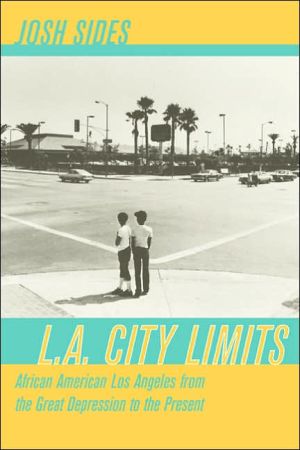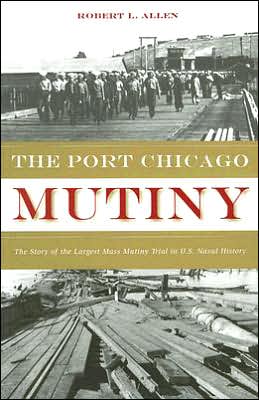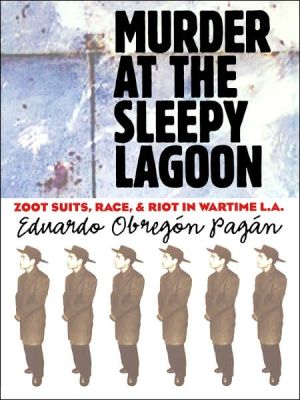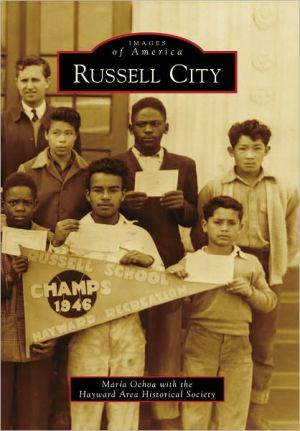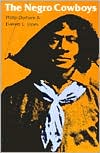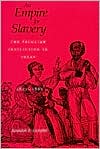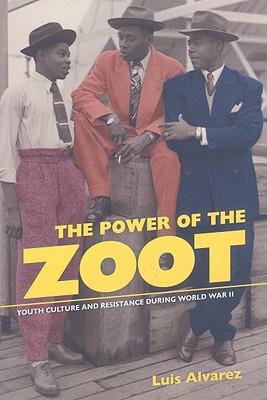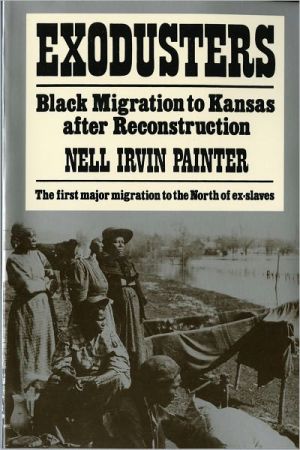L.A. City Limits: African American Los Angeles from the Great Depression to the Present
In 1964 an Urban League Survey ranked Los Angeles as the most desirable city for African Americans to live in. In 1965 the city burst into flames, roiled by one of the worst race riots in the nation's history. How the city came to such as a pass - embodying both the best and worst of what urban America offered blacks from the South - is the story told for the first time in this history of modern black Los Angeles. A clear-eyed and compelling look at black struggles for equality in Los...
Search in google:
In 1964 an Urban League survey ranked Los Angeles as the most desirable city for African Americans to live in. In 1965 the city burst into flames during one of the worst race riots in the nation's history. How the city came to such a pass—embodying both the best and worst of what urban America offered black migrants from the South—is the story told for the first time in this history of modern black Los Angeles. A clear-eyed and compelling look at black struggles for equality in L.A.'s neighborhoods, schools, and workplaces from the Great Depression to our day, L.A. City Limits critically refocuses the ongoing debate about the origins of America's racial and urban crisis. Challenging previous analysts' near-exclusive focus on northern "rust-belt" cities devastated by de-industrialization, Josh Sides asserts that the cities to which black southerners migrated profoundly affected how they fared. He shows how L.A.'s diverse racial composition, dispersive geography, and dynamic postwar economy often created opportunities—and limits—quite different from those encountered by blacks in the urban North.
L.A. City Limits\ African American Los Angeles from the Great Depression to the Present \ \ By Josh Sides \ University of California\ Copyright © 2003 Regents of the University of California\ All right reserved.\ ISBN: 0-520-23841-9 \ \ \ \ Introduction\ Mary Trimble stood on the porch of her Los Angeles home in 1950 and spoke openly with a local newspaper reporter about her decision to migrate to the city seven years earlier. Born in 1898 in Keithville, Louisiana-a heavily segregated rural town in the heart of America's infamous "black belt"-Trimble understood that her educational and occupational opportunities there had been hopelessly limited. Educated in separate and patently unequal schools, confined to the most menial and degrading jobs, and always fearful of wanton racial violence, African Americans in Keithville and other small towns throughout the American South had to wear what black poet Paul Laurence Dunbar once called "the mask": that veil of racial inferiority and servility mandated by Jim Crow society. Trimble may have worn the mask, but it never became part of her: "I knew my place and kept it. Of course I knew better but I never let on." Trimble's family later moved to Texas in search of better opportunities, but Mary, like virtually all black women across the country, still found that domestic service was the only field open to her. \ Yet, during World War II, Trimble had a revelation that changed her life forever. "I remember the day in '43," she recounted, "when I decided to come here." Shortly after beginning her shift cleaning house for another "rich family," the woman of the house told me, "Now, you can draw Mr. Harry's bath. He'll be home right away." Suddenly it struck me. "Mr." Harry was 18. The family had lots of money, but they were afraid that he'd be drafted so they put him to work in a war plant. I just decided, sudden-like, I was through "Missing" and "Mistering"-that I'd go where I\ could get a job in a war plant myself.\ With little hesitation, Trimble bade farewell to the South and migrated to Los Angeles, where she quickly found work at the booming California Shipbuilding Company (Calship) yard on Terminal Island, in the bustling port of Los Angeles at the southernmost tip of the city. No longer forced to clean house for a living, Trimble had joined the thousands of other black and white migrants entrusted with the awesome responsibility of building the "arsenal of democracy"-and, as she remembered, "I liked it."\ This is a book about people like Mary Trimble and the cities that were transformed by their migration. Bitterly resentful of southern racial bigotry and brutality, enticed by well-advertised job opportunities in the nation's booming defense industries, and cautiously optimistic about the potential for racial equality in America's big cities, African Americans launched an exodus from the South that would continue uninterrupted for twenty-five years. During the 1950s and 1960s, the violent white backlash that accompanied the civil rights movement in the South stimulated further black out-migration. Ultimately, almost five million black people left the South between 1940 and 1970. Not until the 1970s, as opportunities dwindled in the urban North and West, and racial violence waned in the South, did the exodus finally abate. In their migrations, African Americans not only radically altered their own lives and opportunities but also permanently transformed urban America. From Charleston and Mobile in the South, to Chicago, Cleveland, and Detroit in the North, to Seattle, Portland, San Francisco, San Diego, and Los Angeles in the West, America's cities became increasingly black, a trend with far-reaching social, political, and economic implications. Between 1940 and 1970, the black population in Los Angeles grew faster than in any other large northern or western city, climbing from 63,744 to almost 763,000. Although this phenomenal growth has slowed considerably since the 1970s, Los Angeles now has the seventh largest black population in the country.\ World War II was a critical turning point for blacks in America. The deepening labor shortage, coupled with the vast new demand for industrial output, forced the nation's defense manufacturers to look beyond their traditionally white, male, and often skilled labor pool. Shipbuilding, aircraft, steel, and automobile plants retooled for war production; and a host of other large industrial manufacturers were reorganized to speed production by "deskilling" the production process. Lower skill requirements and greater labor demand opened the door of industrial employment to women and African Americans, who had long been denied both the training and the experience necessary for such work.\ African Americans also benefited from President Franklin Delano Roosevelt's Executive Order 8802, issued in 1941, which forbade discrimination in wartime defense industries and created the Fair Employment Practice Committee (FEPC) to investigate charges of racial discrimination. Issued as a direct response to black labor leader A. Philip Randolph's call for a fifty-thousand-person march on Washington unless blacks were given wartime job opportunities, Executive Order 8802 was hailed as a clear victory for racial equality. Although the FEPC ultimately proved to be a highly contentious and sometimes ineffective tool for resolving discrimination issues, its symbolic importance for African Americans is difficult to overstate. Not since Congress passed the Thirteenth and Fourteenth Amendments during Reconstruction had the federal government significantly intervened on behalf of African Americans. The U.S. Supreme Court, in fact, had consistently reaffirmed the constitutional foundations of racial discrimination in several landmark decisions. Thus, FDR's executive order, despite its shortcomings, was emboldening for African Americans throughout the nation because it demonstrated that the federal government, when compelled, could be a potent force for desegregation. This notion, combined with the actual opening of thousands of well-paid industrial jobs to blacks, proved to be a heady mix for those concerned about racial equality in the United States.\ Throughout the country, black leaders, black workers, and both black and white scholars expressed guarded optimism about the future of black America. In his exhaustive An American Dilemma, published in 1944, Gunnar Myrdal predicted that "there is bound to be a redefinition of the Negro's status in America as a result of this war." St. Clair Drake and Horace Cayton's famous study of black Chicago-which explored the myriad and truly crippling effects of racial discrimination in urban America-ended on an optimistic note: "Important changes are on their way and the present system may reform into something quite different which will give Negroes many-if not all-the opportunities now denied them." The potential for phenomenal change was even more pronounced in Los Angeles than it was in Chicago or other northern cities where blacks had long been an important part of the industrial labor force. In Los Angeles, employers' preference for Mexican labor in manual occupations had traditionally circumscribed job opportunities for blacks, relegating most African Americans to poorly paid and sometimes degrading positions in the city's robust service sector. It was little wonder, then, that Los Angeles Urban League director Floyd Covington referred to Executive Order 8802 as the "Second Emancipation for the American Negro" in his 1943 address to the National Urban League.\ The optimism with which blacks viewed the future was actually borne out in many concrete ways in the two decades after World War II. In absolute and relative terms, black employment increased in several sectors of the economy, particularly in manufacturing industries. Across the country, and particularly in Los Angeles, blacks purchased homes in rising numbers. And postwar executive, judicial, and legislative assaults on Jim Crow crippled the legal basis of segregation in schools, in neighborhoods, and at work. These postwar advances culminated in the passage of the Civil Rights Act of 1964, which promised to finally stamp out workplace discrimination, the greatest remaining barrier to economic equality for African Americans. As historians have increasingly recognized, the World War II and postwar years represented a window of opportunity to end or, at the very least, dramatically reduce racial inequality in America. This certainly seemed the case in Los Angeles, ranked in a 1964 National Urban League survey as the most desirable city in America for black people.\ But the violent race riots that engulfed urban America in the 1960s shattered the notion that racial equality was imminent. And perhaps none was more shattering than the Watts riot of 1965, not only because it was the most destructive racial clash since the Detroit riot of 1943 but also because it happened in Los Angeles, a city long considered uniquely hospitable to blacks. It was also the first in a new wave of race riots that spread to Chicago, Tampa, Cincinnati, Atlanta, Newark, Detroit, and numerous smaller cities and communities in the late 1960s. As images of young black men burning and looting urban America continued to flash across television screens, few could doubt the Kerner Commission's famous 1968 assertion that "the nation is rapidly moving toward two increasingly separate Americas," one white, one black. The Kerner Commission, Los Angeles's McCone Commission, and the Department of Labor's Office of Policy Planning and Research, which published the controversial "Moynihan report" on the black family in 1965, all offered explanations for racial unrest in America, including a severely compromised black family structure, poor educational and job opportunities, and an increased disaffectedness among black youth. By the 1970s, social scientists had identified an urban "underclass," a permanently poor and predominantly black stratum of American society; in the 1980s, they debated the relative importance of behavior, public policy, culture, family, and ecology in creating and shaping that underclass.\ Although these debates produced important insights, they too often buried the critical historical dimensions of their subject. Indeed, from the viewpoint of these studies of the underclass, the era of black optimism and advance was not only absent but also scarcely imaginable. Fundamental questions were left unanswered: Why did the end of de jure racial inequality not produce de facto racial equality in urban America? And, more specifically, why did the wartime predictions of imminent economic parity with whites not come true for the majority of African Americans?\ In the past decade, scholars, and particularly historians, have made great strides toward answering these questions. For example, in their investigations of racial politics in Boston, in New York, and at the national level, Ronald Formisano, Jonathan Rieder, Jim Sleeper, Thomas Byrne Edsall, and Mary D. Edsall have emphasized the retreat of liberalism among working-class whites, a group disproportionately affected by court-mandated desegregation in schools and in the workplace. Others, such as Douglas Massey, Nancy Denton, Arnold Hirsch, and William Julius Wilson, have explored the willful re-creation of the ghetto in postwar Chicago, emphasizing the role of real estate agents, civic leaders, and white homeowners in perpetuating residential segregation. Perhaps the most comprehensive explanation is Thomas J. Sugrue's study of postwar Detroit, which attributes persistent racial inequality to deindustrialization, grassroots conservatism, and impoverished public policy.\ Although these narratives of the urban crisis present disparate viewpoints about the persistence of postwar racial inequality, they share one constant: they all unfold in the northern and northeastern United States. Their near-exclusive focus on northern cities has had the effect of obscuring the critical role that place has played in shaping postwar opportunities for urban blacks. Chicago and Detroit are not, as it turns out, synonymous with urban America. In fact, the modern history of Los Angeles has unfolded in ways that diverge, sharply at times, from the histories of America's "rust belt" cities. African Americans' pursuit of equality and opportunity in Los Angeles has been shaped by at least three distinctive features of the city's history: its diverse racial composition, its dynamic economic growth, and its dispersive spatial arrangement.\ First, Los Angeles's magnetic appeal to successive waves of Latin American, Asian, and European immigrants ensured that the black freedom struggle would develop in a strikingly multiracial context. Thanks to a growing body of rich scholarship by Kevin Leonard, Douglas Monroy, George Sánchez, Mark Wild, and others, we have a much clearer understanding of the contours of Los Angeles's diverse population, including its largest minority group, Mexicans. Yet the extent to which the multiracial character of the city affected opportunity for African Americans is generally less understood.\ The effect of this racial diversity on blacks in Los Angeles has not been static; rather, it has changed through both time and space. Before World War II, most African Americans in Los Angeles lived among and interacted with Mexicans, Japanese, Italians, Jews, and the city's small Chinese population. This arrangement, coupled with the vast size and low population density of the city, mitigated the harshest social and psychological effects of racial segregation by diffusing the racial animosity usually reserved exclusively for blacks in other cities. Economically, however, the multiracial character of the city worked against blacks by generating increased competition for the menial labor and manufacturing jobs that would have gone to them easily in a city like Chicago or Detroit. After World War II, the vast influx of blacks and the changing social status of other racial and ethnic groups in Los Angeles created a situation where black isolation, rather than the multiracial integration of the prewar era, became more common. As industrial employment opportunities for nonwhites expanded in the two decades after the war, African Americans increasingly understood Mexicans to be competitors for coveted jobs. Between the 1920s and the 1970s, the multiracial character of Los Angeles moved from being a qualified blessing to a qualified curse for blacks, particularly those in blue-collar occupations.\ Second, while histories of the rust belt north emphasize the crucial role of deindustrialization and overall urban economic decline in perpetuating racial inequality, the story in Los Angeles is far more complicated. In striking contrast to the steady decline in manufacturing jobs that began in the 1950s in Chicago and Detroit, Los Angeles gained thousands of new manufacturing jobs through the 1970s, thanks in large part to the crucial aerospace industry.\ \ Continues...\ \ \ \ Excerpted from L.A. City Limits by Josh Sides Copyright © 2003 by Regents of the University of California. Excerpted by permission.\ All rights reserved. No part of this excerpt may be reproduced or reprinted without permission in writing from the publisher.\ Excerpts are provided by Dial-A-Book Inc. solely for the personal use of visitors to this web site. \ \
List of IllustrationsAcknowledgmentsIntroduction11African Americans in Prewar Los Angeles112The Great Migration and the Changing Face of Los Angeles363The Window of Opportunity: Black Work in Industrial Los Angeles, 1941-1964574Race and Housing in Postwar Los Angeles955Building the Civil Rights Movement in Los Angeles1316Black Community Transformation in the 1960s and 1970s169Epilogue199Maps: The Historical Geography of African American Los Angeles209Notes217Bibliography255Index279
